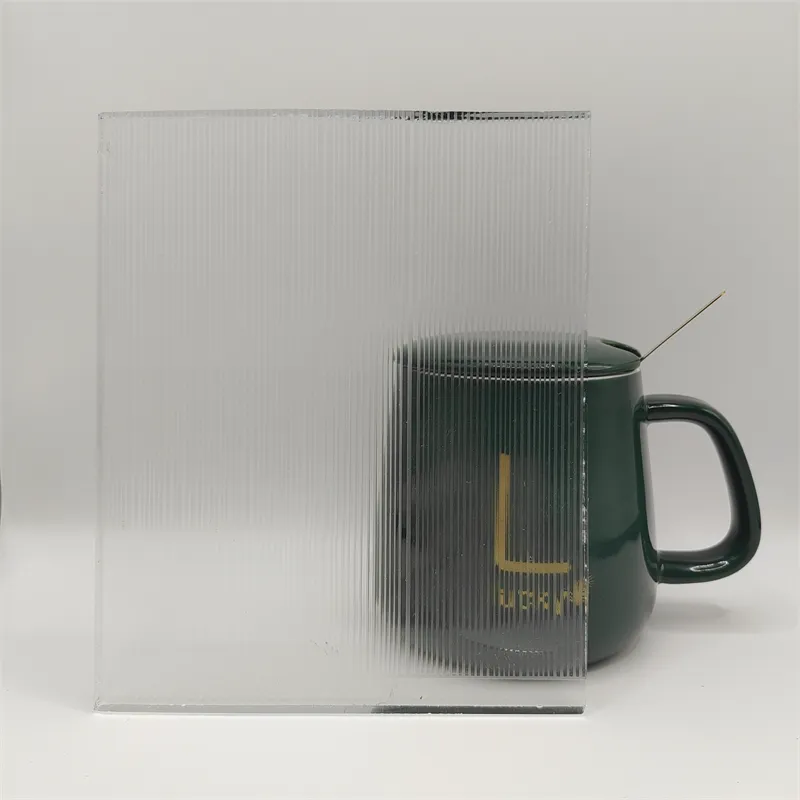Nov . 10, 2024 23:07 Back to list
10mm Low Iron Glass for Enhanced Clarity and Strength in Architectural Design
Understanding 10mm Low Iron Glass A Modern Architectural Solution
In the world of modern architecture and design, the materials we choose can significantly influence aesthetics, functionality, and sustainability. One such material that has gained prominence in recent years is 10mm low iron glass. This specialized glass offers a range of benefits that make it a preferred choice for a variety of applications, from residential windows to commercial facades. In this article, we will explore what low iron glass is, its advantages, and its myriad uses in the contemporary built environment.
What is Low Iron Glass?
Low iron glass is a type of glass that contains minimal iron oxide. Standard glass typically has a greenish tint due to the iron content, which can interfere with clarity and light transmission. In contrast, low iron glass boasts a much clearer appearance, allowing for higher levels of transparency and light, with minimal color distortion. The 10mm designation refers to the thickness of the glass, which strikes a balance between strength and weight, making it suitable for both structural and decorative applications.
Advantages of 10mm Low Iron Glass
1. Superior Clarity and Aesthetics One of the most significant attributes of low iron glass is its clarity. This makes it an excellent choice for applications where visibility is paramount, such as glass facades, skylights, and display cases. Its crystal-clear appearance enhances the beauty of architectural designs, allowing colors and details to appear more vibrant.
2. High Light Transmission Low iron glass offers exceptional light transmission properties—over 90%—compared to standard glass. This not only reduces the need for artificial lighting, thus enhancing energy efficiency, but also creates brighter and more inviting interiors.
3. Durability and Strength At 10mm thick, low iron glass possesses considerable strength, making it suitable for various structural applications. It can withstand significant impact and stress while retaining its optical clarity. For buildings in areas prone to harsh weather or high winds, the durability of this glass is an important advantage.
4. Versatile Applications Due to its combination of aesthetic appeal and structural integrity, 10mm low iron glass is versatile. It can be used in a myriad of applications, from curtain walls and glass roofs to balustrades and shower enclosures. Moreover, it can be laminated or tempered for additional strength and safety, making it suitable for high-traffic areas.
10mm low iron glass

5. Sustainability In a world increasingly focused on sustainability, low iron glass stands out because it can help improve the energy efficiency of buildings. By maximizing natural light while minimizing heat loss, it contributes to reduced dependence on artificial lighting and HVAC systems. Additionally, its recyclability aligns with environmentally responsible building practices.
Applications of 10mm Low Iron Glass
Given its myriad benefits, 10mm low iron glass finds use in several key areas
- Residential Architecture Homeowners and architects frequently use low iron glass for large window installations, sliding doors, and glass railings. Its transparency creates a seamless connection between indoor and outdoor spaces, enhancing the visual appeal of homes.
- Commercial Buildings In commercial architecture, especially for storefronts and office buildings, low iron glass provides an upscale look while ensuring natural light permeates the space. It is commonly used for facades, partitions, and atriums.
- Decorative Elements Beyond structural uses, 10mm low iron glass is also popular for decorative applications. This includes glass sculptures, tabletops, and even art installations where clarity is essential to showcase the design.
- Skylights and Roofing Utilizing low iron glass for skylights allows for maximum daylight entry without altering color schemes. This is particularly desirable in spaces like atriums and galleries, where lighting plays a critical role in the overall experience.
Conclusion
10mm low iron glass is not just a material; it embodies the intersection of beauty, functionality, and sustainability. As architects and designers continue to seek innovative solutions for modern challenges, the clarity and versatility of low iron glass will undoubtedly play a significant role in shaping the future of architectural design. By integrating this advanced material into their projects, professionals can create spaces that are not only visually stunning but also functional and environmentally responsible. As we move forward, the demand for advanced materials like low iron glass will likely continue to grow, reflecting an industry in a constant state of evolution.
-
Safety and Style with Premium Laminated Glass Solutions
NewsJun.24,2025
-
Reinvents Security with Premium Wired Glass
NewsJun.24,2025
-
Premium Float Glass Line for Modern Architecture
NewsJun.24,2025
-
Low Emissivity Glass for Energy-Efficient Architecture
NewsJun.24,2025
-
High-Performance Insulated Glass Solutions for Modern Architecture
NewsJun.24,2025
-
Elevates Interior Style with Premium Silver Mirror
NewsJun.24,2025
Related PRODUCTS














